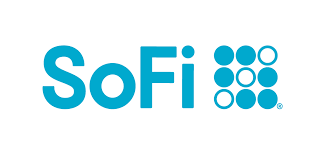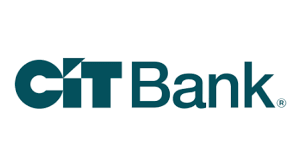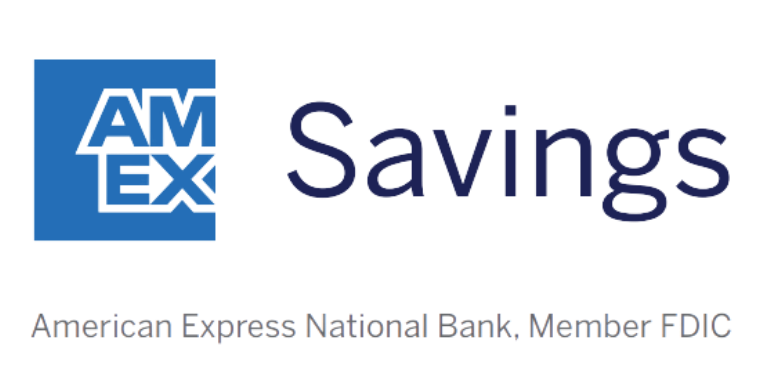From gas prices to food costs, the dollar is not going as far as it used to. With inflation still stubbornly high, it is important to find high-yield savings accounts that pay a high interest rate and invest your money to beat inflation. Here's what to do with your savings during inflation.
Does the interest rate on my account matter?
The national average savings rate is currently 0.41. With the current inflation rate, the real value of your money is actually decreasing by 3.24% every 12 months. Getting a low interest rate means you are losing money. Not only are bank accounts paying very little interest, but keeping the bulk of your money in cash means you are losing purchasing power.
Most experts say you should keep three to six months of your expenses in your emergency savings account. Anything above that could result in needlessly losing money to inflation. You should do your research and find a high-interest savings account for your emergency savings.
While a savings account may not be a growth asset, a high-yield savings account can keep up with inflation in nominal terms as long as inflation is complemented with short-term interest rate changes. With the economy unpredictable, using short-term CDs and keeping some cash in a high-yield savings account can give you some time to get a better understanding of what longer-term inflation may look like.
Related: Best Places to Keep Your Emergency Fund
What is a good interest rate?
Earning a higher APY can make a big difference. A savings account's annual percentage yield, or APY, is the amount of interest you earn in a year. For example, $10,000 in an account offering the 0.41 national average would earn $42 per year. The same amount in an account earning a higher rate of 4.00% will earn $400 per year. This difference will compound over time.
You should look for banks that offer high annual percentage rates (APY). The higher the account's APY, the faster your savings will grow. What is a good interest rate for a savings account? Currently, the best savings accounts offer an APY between 3.8%-4.5%.
Compare savings rates
Make sure you're getting the best account for you by comparing savings rates and promotions. Here are some of our favorite high-yield savings accounts to consider.
| Account | APY | Promotion | Next Steps |
|---|---|---|---|

Open Account for SoFi Checking and Savings
On SoFi's Secure Website.
Rating image, 4.50 out of 5 stars.
4.50/5
Our ratings are based on a 5 star scale.
5 stars equals Best.
4 stars equals Excellent.
3 stars equals Good.
2 stars equals Fair.
1 star equals Poor.
We want your money to work harder for you. Which is why our ratings are biased toward offers that deliver versatility while cutting out-of-pocket costs.
|
up to 3.80%²
Rate info
You can earn the maximum APY by having Direct Deposit (no minimum amount required) or by making $5,000 or more in Qualifying Deposits every 30 days. See SoFi Checking and Savings rate sheet at: https://www.sofi.com/legal/banking-rate-sheet.
Min. to earn: $0
|
New customers can earn up to a $300 bonus with qualifying direct deposits!¹
|
Open Account for SoFi Checking and Savings
On SoFi's Secure Website. |

Open Account for CIT Platinum Savings
On CIT's Secure Website.
Rating image, 4.50 out of 5 stars.
4.50/5
Our ratings are based on a 5 star scale.
5 stars equals Best.
4 stars equals Excellent.
3 stars equals Good.
2 stars equals Fair.
1 star equals Poor.
We want your money to work harder for you. Which is why our ratings are biased toward offers that deliver versatility while cutting out-of-pocket costs.
|
4.10% APY for balances of $5,000 or more
Rate info
4.10% APY for balances of $5,000 or more; otherwise, 0.25% APY
Min. to earn: $100 to open account, $5,000+ for max APY
|
Earn a bonus of at least $225 after a one-time deposit of $25,000+.
Transfer a one-time deposit of $25,000-$49,999.99 for a bonus of $225. Transfer a one-time deposit of $50,000+ for a bonus of $300. Account must be opened with code PS2025 while this promotion lasts, and funded within 30 days. Bonus will be fulfilled within 60 days from the funding date. There is no period of time where the customer will be required to maintain the funds. Account must be open when bonus is credited. One bonus per account and primary customer. Bonus will be credited into the Platinum Savings Account that fulfills the funding requirement. Funding can be deposited all at once or incrementally.
|
Open Account for CIT Platinum Savings
On CIT's Secure Website. |

Open Account for American Express® High Yield Savings
On American Express's Secure Website.
Rating image, 4.00 out of 5 stars.
4.00/5
Our ratings are based on a 5 star scale.
5 stars equals Best.
4 stars equals Excellent.
3 stars equals Good.
2 stars equals Fair.
1 star equals Poor.
We want your money to work harder for you. Which is why our ratings are biased toward offers that deliver versatility while cutting out-of-pocket costs.
|
3.70%
Rate info
3.70% annual percentage yield as of April 16, 2025. Terms apply.
Min. to earn: $0
|
N/A
|
Open Account for American Express® High Yield Savings
On American Express's Secure Website. |
SoFi disclosure:
¹ New and existing Checking and Savings members who have not previously enrolled in Direct Deposit with SoFi are eligible to earn a cash bonus of either $50 (with at least $1,000 total Direct Deposits received during the Direct Deposit Bonus Period) OR $300 (with at least $5,000 total Direct Deposits received during the Direct Deposit Bonus Period). Cash bonus will be based on the total amount of Direct Deposit. Direct Deposit Promotion begins on 12/7/2023 and will be available through 1/31/26. See full bonus and annual percentage yield (APY) terms at sofi.com/banking#1.
² SoFi members who enroll in SoFi Plus with Direct Deposit or by paying the SoFi Plus Subscription Fee every 30 days or with $5,000 or more in Qualifying Deposits during the 30-Day Evaluation Period can earn 3.80% annual percentage yield (APY) on savings balances (including Vaults) and 0.50% APY on checking balances. There is no minimum Direct Deposit amount required to qualify for the stated interest rate. Members without either SoFi Plus or Qualifying Deposits, during the 30-Day Evaluation Period will earn 1.00% APY on savings balances (including Vaults) and 0.50% APY on checking balances. Only SoFi Plus members are eligible for other SoFi Plus benefits. Interest rates are variable and subject to change at any time. These rates are current as of 1/24/25. There is no minimum balance requirement. Additional information can be found at http://www.sofi.com/legal/banking-rate-sheet. See the SoFi Plus Terms and Conditions at https://www.sofi.com/terms-of-use/#plus.
³ We do not charge any account, service or maintenance fees for SoFi Checking and Savings. We do charge a transaction fee to process each outgoing wire transfer. SoFi does not charge a fee for incoming wire transfers, however the sending bank may charge a fee. Our fee policy is subject to change at any time. See the SoFi Checking & Savings Fee Sheet for details at sofi.com/legal/banking-fees/.
⁴ SoFi Bank is a member FDIC and does not provide more than $250,000 of FDIC insurance per depositor per legal category of account ownership, as described in the FDIC’s regulations.
Any additional FDIC insurance is provided by the SoFi Insured Deposit Program. Deposits may be insured up to $3M through participation in the program. See full terms at SoFi.com/banking/fdic/sidpterms. See list of participating banks at SoFi.com/banking/fdic/participatingbanks.
⁵ We’ve partnered with Allpoint to provide you with ATM access at any of the 55,000+ ATMs within the Allpoint network. You will not be charged a fee when using an in-network ATM, however, third-party fees incurred when using out-of-network ATMs are not subject to reimbursement. SoFi’s ATM policies are subject to change at our discretion at any time.
⁶ Early access to direct deposit funds is based on the timing in which we receive notice of impending payment from the Federal Reserve, which is typically up to two days before the scheduled payment date, but may vary.
⁷ Overdraft Coverage is limited to $50 on debit card purchases only and is an account benefit available to customers with direct deposits of $1,000 or more during the current 30-day Evaluation Period as determined by SoFi Bank, N.A. The 30-Day Evaluation Period refers to the “Start Date” and “End Date” set forth on the APY Details page of your account, which comprises a period of 30 calendar days (the“30-Day Evaluation Period”). You can access the APY Details page at any time by logging into your SoFi account on the SoFi mobile app or SoFi website and selecting either (i) Banking > Savings > Current APY or (ii) Banking > Checking > Current APY. Members with a prior history of non-repayment of negative balances are ineligible for Overdraft Coverage.
Six things to do with your savings during inflation
Understanding interest rates and how inflation impacts various aspects of the financial markets is only a part of the equation. Knowing how to best handle your savings during periods of prolonged inflation will help you to come out on the other end of it with as little damage to your own finances as possible.
Here are six things to consider doing with your savings during inflation.
1. Invest your money in the stock market
Investing in stocks is one of the best ways to keep up with inflation. Stocks typically outperform inflation over the long term, which is why many investors look to them as a way to protect their savings. Keep in mind that investing in stocks comes with a certain level of risk, so be sure to do your research before making any decisions. Dollar-cost averaging and investing consistently can help you meet your financial goals.
The 10 best days in the stock market in the past 20 years occurred after big declines including the 2008 financial crisis and the onset of COVID-19. If you invested $10,000 in the S&P 500 starting on Jan. 1, 2002, you would have had $51,766 by Dec. 31, 2022. If you missed the best 10 days during this time period, you would have had only about $30,000, or over 40% less.
In comparison, $10,000 sitting in a savings account averaging 0.40% a year over the same time period would be worth just $10,875. Over the long term, investing in the stock market is one of the most effective ways to beat inflation. The key is to build your investment portfolio based on your risk profile and investment objectives. Also, you should avoid investing any money you might need within five years, since the stock market can be volatile in the short term.
2. Look at TIPS
For those who prefer a safer investment approach, inflation-protected securities may be worth considering. Treasury Inflation-Protected Securities (TIPS) are government bonds that help protect you from inflation. While the returns on inflation-protected securities may not be as high as other investment options, they can provide peace of mind during inflationary times.
The principal balance of TIPS increase with inflation and decrease with deflation, as measured by the consumer price index (CPI). The higher inflation is, the higher your payments are. TIPS are also backed by the government. You can buy TIPS from TreasuryDirect or through a bank or broker.
3. Consider real estate
Another option for protecting your savings during inflation is to invest in real estate. Real estate can be a tangible asset that holds its value over time. Plus, it can provide a steady income stream through rental properties.
While real estate investing also comes with risks, many investors find it to be a worthwhile way to safeguard their savings.
4. Invest in commodities
Investing in commodities like gold, oil, or agriculture products can also be a way to protect your savings during inflation. Commodities tend to hold their value over time and increase in price during periods of inflation. However, commodities can be a volatile investment option, so it’s important to approach them with caution.
5. Pay off variable-rate debt
To cool off inflation, the Fed raises interest rates to raise borrowing costs and slow down demand. You should focus on paying off variable-rate debt such as credit cards, a home equity line of credit (HELOC), and other debt impacted by higher interest rates. The average credit card interest rate is currently about 21%. The average credit card APR was at 16.17% in March 2022, before the Fed began its rate increases.The interest rate for those with subprime credit is as high as 30%
The difference between a 15% APR and a 20% APR can be thousands of dollars in interest. You should focus on paying off your high-interest-rate debt during times of high inflation. If you have a lot of debt, you can look at transferring your high-interest debt to a lower APR, get a debt consolidation loan, or ask your credit card issuer to lower your interest rates.
6. Save more
If you’re worried about the effects of inflation on your savings, it’s always a good idea to focus on reducing your expenses. This can involve simple steps like cutting back on dining out, finding more affordable housing, or using coupons and discounts when shopping. The key is to find ways to maintain your quality of life while spending less money.
When inflation is high and prices are rising, your money won't go as far. Keeping a budget can help you reduce your spending. Certain categories have increased more than others, so you may need to update how much you have budgeted per category.
When necessities begin to cost more, reduce your spending and keep your costs low. Cancel unwanted subscriptions, eat out less often, and look for ways to save gas. Cutting back on your spending can help offset higher costs. Until prices return to normal, your money is less valuable. Adding more to your savings account can help you be prepared if high inflation continues to be a problem.
Many people are missing out on guaranteed returns as their money languishes in a big bank savings account earning next to no interest. Motley Fool Money's top savings account picks can earn you more than 10x the national average savings account rate.
FAQs
-
If inflation is higher than the interest rate you earn on a savings account, then you are losing money. High inflation can erode your savings.
-
How much you keep in savings is a personal choice, but we recommend three to six months of your expenses as emergency savings in your savings account. Anything above that could result in needlessly losing money to inflation.
-
You should save more during times of high inflation. When inflation is high, your money won't go as far. Spending less can help offset higher prices.
We're firm believers in the Golden Rule, which is why editorial opinions are ours alone and have not been previously reviewed, approved, or endorsed by included advertisers. Motley Fool Money does not cover all offers on the market. Motley Fool Money is 100% owned and operated by The Motley Fool. Our knowledgeable team of personal finance editors and analysts are employed by The Motley Fool and held to the same set of publishing standards and editorial integrity while maintaining professional separation from the analysts and editors on other Motley Fool brands. Terms may apply to offers listed on this page. APYs are subject to change at any time without notice.